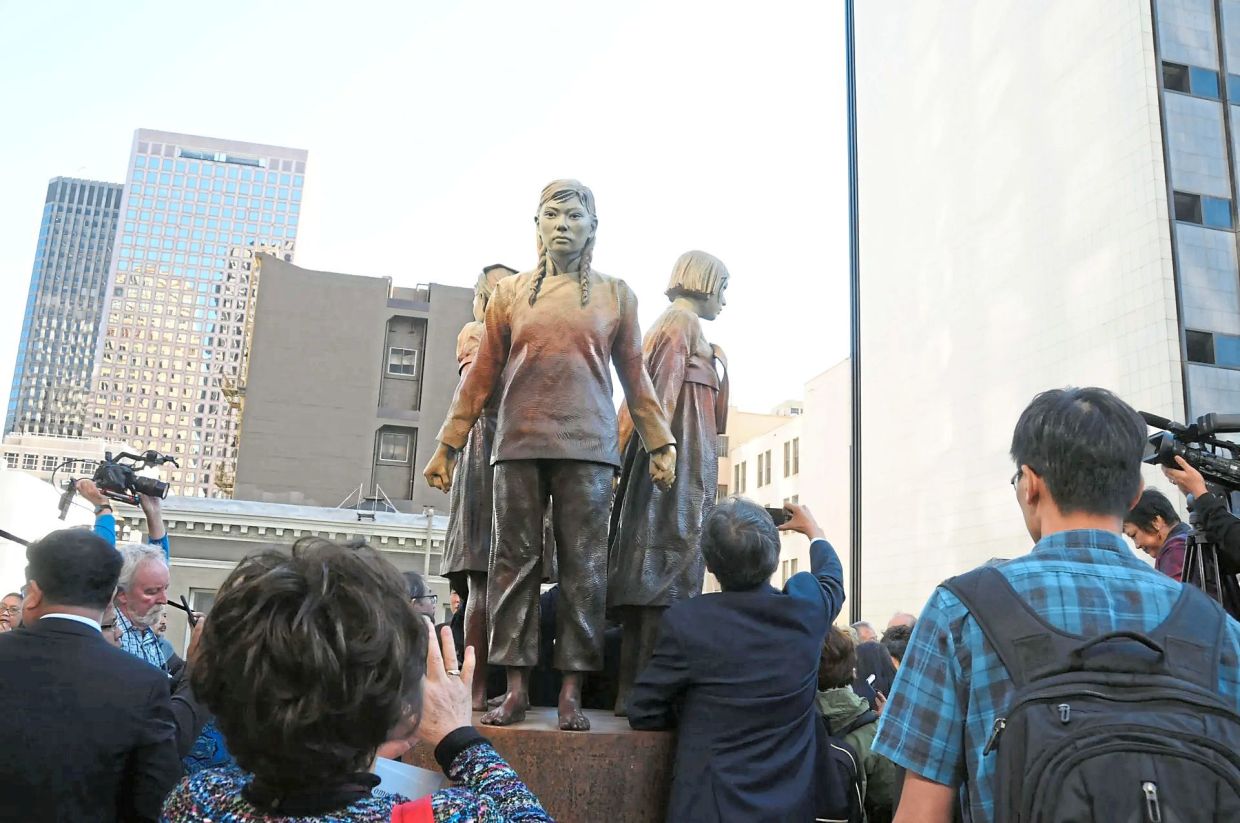The Statue of Peace featuring a seated young woman, is decorated with flowers in Berlin on Oct 27, 2020. — AFP
ON a quiet street corner in Berlin’s Mitte district, a bronze statue of a young girl in a traditional Korean dress glitters in the sun.
Her fists are clenched, her expression tense. She is seated but her heels do not touch the ground. A shadow of an elderly woman is carved into the granite below her. Beside her is an empty chair.
Uh-oh! Daily quota reached.










